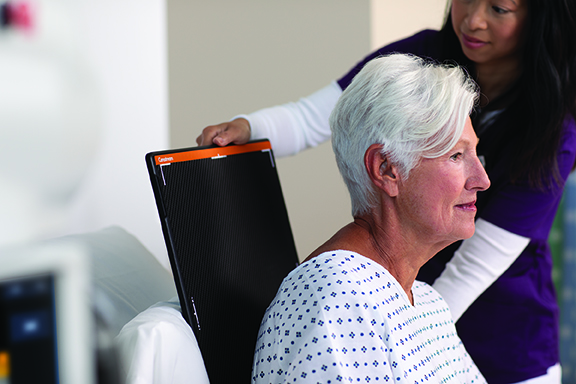Carestream Launches Its First Glass-Free, Cesium Medical Detector
 Carestream Health has launched its first cesium glass-free medical detector to the market. The CARESTREAM Lux 35 Detector is a lightweight, glass-free wireless detector ergonomically designed with the comfort of patients and radiographers in mind. The cesium detector offers superb resolution, better detail and a reduced exposure dose as compared to gadolinium detectors. The introduction of the Lux 35 Detector is an illustration of Carestream’s commitment to innovation, building on the success of its glass-free detector in the rugged non-destructive testing market.
Carestream Health has launched its first cesium glass-free medical detector to the market. The CARESTREAM Lux 35 Detector is a lightweight, glass-free wireless detector ergonomically designed with the comfort of patients and radiographers in mind. The cesium detector offers superb resolution, better detail and a reduced exposure dose as compared to gadolinium detectors. The introduction of the Lux 35 Detector is an illustration of Carestream’s commitment to innovation, building on the success of its glass-free detector in the rugged non-destructive testing market.
Weighing just around 5 pounds, the sleek 14” x 17” (35 cm x 43 cm) Lux 35 Detector, with its glass-free sensor, is Carestream’s lightest detector to date. A lighter detector makes it easier for radiographers to transport while making rounds and performing bedside exams.
“The lightweight Lux 35 Detector helps ease stress on radiographers, especially when doing mobile imaging as they are constantly moving the detector from machine to patient,” said Jill Hamman, Worldwide Marketing Manager of Global X-ray Solutions at Carestream. “The lighter weight and ergonomic finger grips result in less stress and fatigue on radiographers.”
The Lux 35’s ergonomic design enables easier handling and minimizes accidental drops and slips, allowing for easier positioning, especially with bedridden patients. Rounded and beveled edges provide more patient comfort when the detector needs to be placed behind or under a patient. Specially designed and strategically placed finger grips help position the detector effortlessly.
“Easier positioning of the detector can help speed up the time it takes to conduct mobile imaging rounds as well,” Hamman added.
The Lux 35 uses Carestream’s ImageView Software powered by Eclipse for high image quality and consistent presentation. This detector also features the X-Factor, which means it can be shared with other compatible Carestream DRX equipment. LED lights on the detector provide immediate information on its status. “The lighting tells the radiographer that the detector is connected and in ready status, and alerts them when the battery is low and needs to be swapped out,” Ms. Hamman said. “There is also a graphical user interface on the back that can display status information. In the event of an error, it provides additional details that help to minimize downtime by delivering a quick assessment of any issues.”
Additionally, the Lux 35 Detector battery is backwards compatible—it works with DRX Plus Detectors and uses the same battery charger.
The Lux 35 supports a variety of image-processing options to assist radiologists, including Tube and Line Visualization, Pneumothorax Visualization, EVP Plus, Bone Suppression and many more.